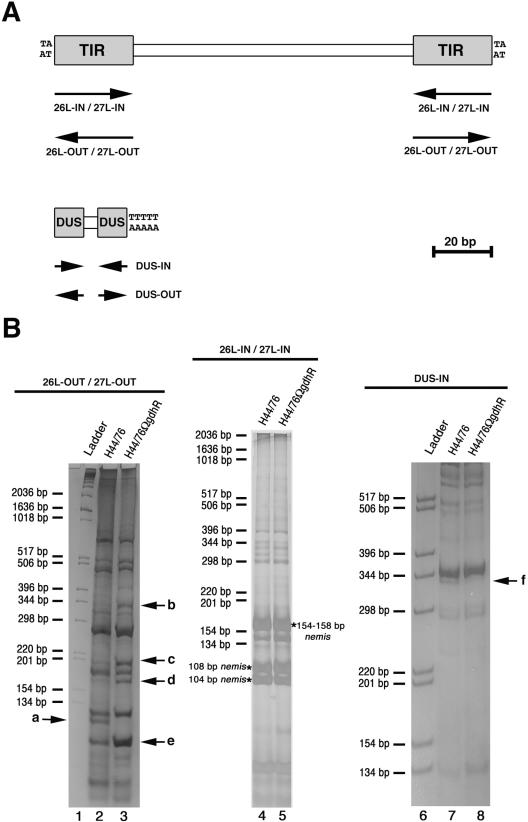FIG. 1.
RT-PCR-DD analysis of transcript in H44/76 and H44/76ΩgdhR. (A) Schematic representation of the neisserial nemis (also known as Correia element) and DNA uptake sequence (DUS) repeats with the relative positions (arrows) of the oligonucleotides 26L-IN, 26L-OUT, 27L-IN, 27L-OUT, DUS-IN, and DUS-OUT used as primers in RT-PCR-DD analysis in panel B. TIR, terminal inverted repeat. (B) The oligonucleotides 26L-OUT and 27L-OUT (left), 26L-IN and 27L-IN (middle), or DUS-IN (right) were used as primers in RT assays to prepare cDNAs from H44/76 (lanes 2, 4, and 7) and the isogenic derivative H44/76ΩgdhR (lanes 3, 5, and 8) grown in GC-rich medium to late logarithmic phase. The cDNAs were then amplified by PCR using the corresponding oligonucleotides and a mixture of random hexamers as primers, and the PCRs were analyzed by polyacrylamide gel electrophoresis. In lanes 1 and 6, molecular weight ladders, whose sizes are indicated on the left of each panel, were run in parallel. Arrows indicate bands corresponding to either up-regulated (b, c, d, and e) or down-regulated (a and f) genes in the GdhR-defective strain. The asterisks mark the position of the 104-bp-, the 108 bp-, the 154-bp-, or the 158-bp-long subfamily of the nemis element.

